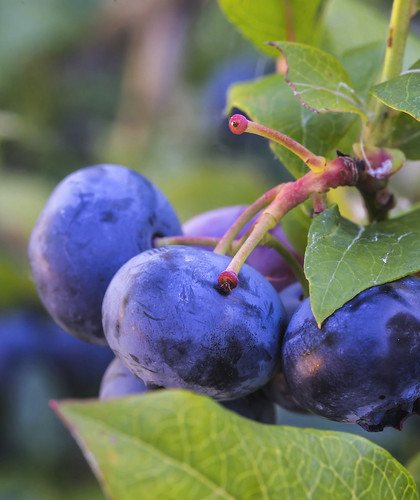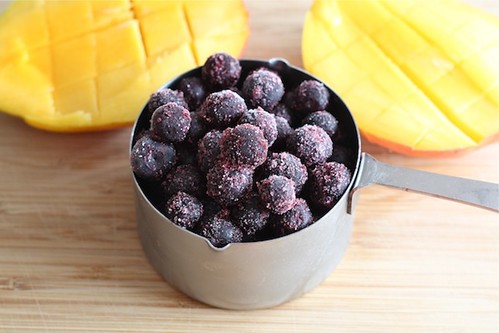
Blueberries are often highly sought after because of their long list of health benefits and their sweet taste. Whether purchased fresh, frozen, or pureed, the blueberry has long been a staple in the diets of many people. Every July, the entire nation celebrates Blueberry Month by coming up with creative recipes and other unique ways to get their fill. Here at USDA, every month is Blueberry Month. One of the ways that we show our appreciation for our nation’s blueberry producers and processors is by creating more opportunities for people to enjoy this delicious fruit.
Indigenous to North America, the history of blueberries can be traced all the way back to Native Americans, who added them to soups, stews, and even meats. Highbush or cultivated blueberries are grown on large bushes that are planted in rows. These blueberries are often sent to the fresh market. Lowbush or wild blueberries produce smaller sized berries and are pruned every couple of years. The majority of lowbush blueberries are processed into items like jams, jellies and baked goods.
My agency, the USDA’s Agricultural Marketing Service (AMS), does its part to help more people eat these little blue dynamos.® Through our Commodity Procurement Program, we purchase frozen cultivated and wild blueberries. The purchases send this highly nutritious food to school children, families, and communities through federal food distribution programs like the National School Lunch Program.
In FY 2013, we bought nearly $17.9 million or 11.3 million pounds of frozen wild blueberries. This provided a reliable outlet for producers in places like Maine where 98% of the nation’s wild blueberries are harvested. As a result of this purchase, states like Maine can continue to strengthen their rural economies.
Our purchases are also making a big difference in states like New Jersey -- the birthplace of the cultivated blueberry. The state’s blueberry industry produced more than 51 million pounds that yielded nearly $81 million in revenue in 2012. This was by far the largest revenue generator in the Garden State’s fruit and vegetable sector that year. In FY 2013, AMS helped continue this trend by buying $18.4 million or 15.4 million pounds of frozen cultivated blueberries from growers across the country.
In addition to our purchases, AMS supports the blueberry industry by offering grants to help it remain competitive in the marketplace. Classified as specialty crops, blueberries are eligible for grants through our Specialty Crop Block Grant Program. This program offers funds to states to support research and marketing projects that do things such as increasing crop yields. So, thanks to Specialty Crop Block Grant funds, several state agriculture departments can conduct research to mitigate the damage to its blueberry crops created by the Brown Marmorated Stinkbug and other invasive pests.
Whether it’s July or any other part of the year, AMS is committed to supporting our nation’s blueberry producers and processors. We recommend that you add some color to your plate with some blueberries. The U.S. Highbush Blueberry Council’s website has some great recipes to get you started.

